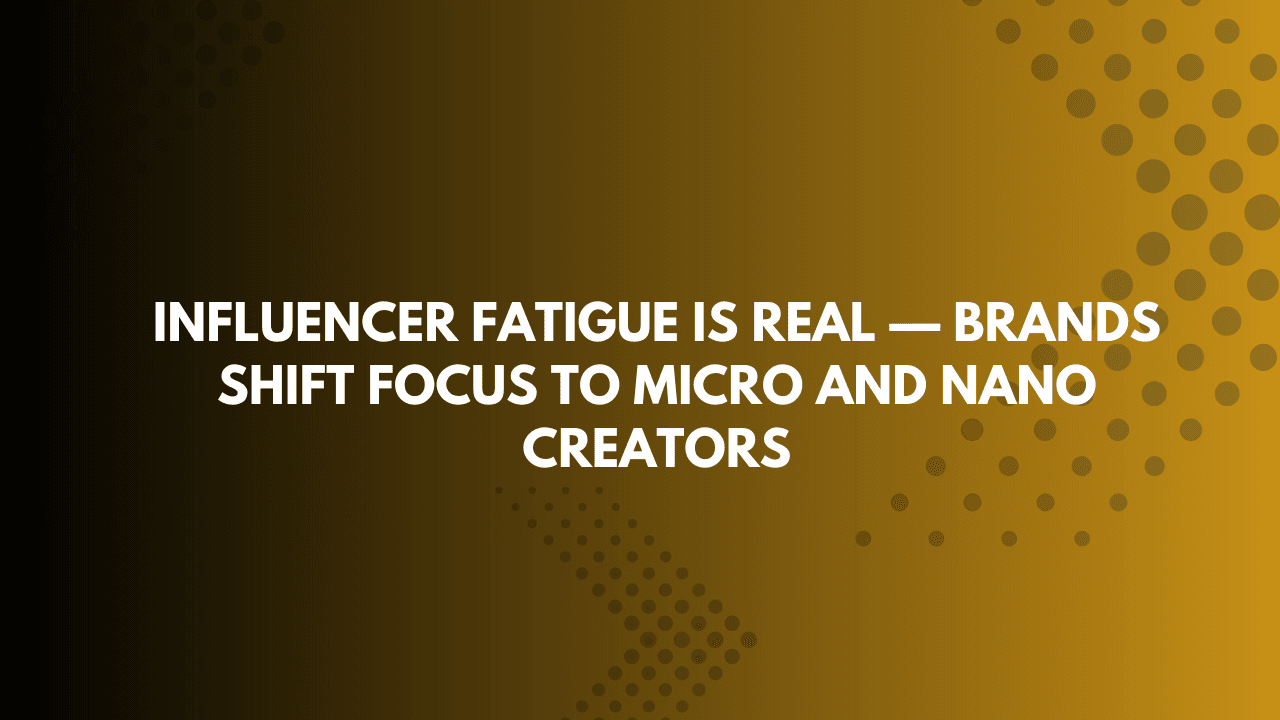Influencer Fatigue Is Real — Brands Shift Focus to Micro and Nano Creators

After dominating marketing budgets for nearly a decade, big-name influencers are starting to lose their grip on brand deals. The cause? Influencer fatigue — a growing skepticism among consumers toward overly polished, heavily sponsored content that feels more like advertising than genuine recommendations.
The Decline of Mega Influencer Impact
Once a guaranteed way to reach millions, mega influencer campaigns are now delivering lower engagement rates and weaker conversions. Followers are noticing repetitive collaborations, inconsistent brand alignments, and posts that read like scripts.
In a 2025 SocialBee Analytics survey, 68% of Gen Z respondents said they “rarely” or “never” trust product endorsements from celebrity influencers without further research.
“When the same influencer promotes skincare today, fast food tomorrow, and a crypto app next week, the audience tunes out,” explains digital strategist Meera Kapoor. “Authenticity is non-negotiable now, and audiences can smell forced promotions a mile away.”
The Rise of Micro and Nano Influencers
In response, brands are moving toward micro influencers (10,000–100,000 followers) and nano influencers (under 10,000 followers). While their reach is smaller, their connection to followers is often far deeper.
SocialBee data shows these smaller creators generate up to 60% higher engagement rates than celebrity influencers, and at significantly lower costs.
For Direct-to-Consumer (D2C) brands especially, this shift makes sense. A nano influencer’s post about a skincare cream can lead to measurable sales spikes in their tight-knit community, while a mega influencer’s post might drive awareness but little action.
Brands Are Prioritizing Authenticity Over Reach
Brands are also seeking long-term collaborations with smaller creators, moving away from one-off sponsored posts.
“When a nano influencer consistently uses and talks about our products over months, their audience starts to believe in our brand story,” says Ananya Rao, marketing head at a fast-growing organic skincare label. “It feels like a genuine friend’s recommendation, not a paid ad.”
Some companies are even replacing traditional influencer deals with ambassador programs — offering free products, affiliate commissions, or exclusive access in exchange for regular, authentic content.
The Future of Influencer Marketing
Industry analysts believe influencer marketing isn’t dying; it’s maturing. As consumers demand transparency and relatability, the power is shifting from follower count to follower trust.
Brands that adapt to this new reality — by working with smaller creators, encouraging user-generated content, and maintaining transparency in partnerships — are likely to see stronger returns.
By 2026, experts predict micro and nano influencers will account for over 70% of brand partnerships in the lifestyle, beauty, and D2C sectors, signaling a more grassroots, community-driven approach to marketing. For consumers, that means fewer glossy celebrity ads and more authentic recommendations from people who feel like friends.